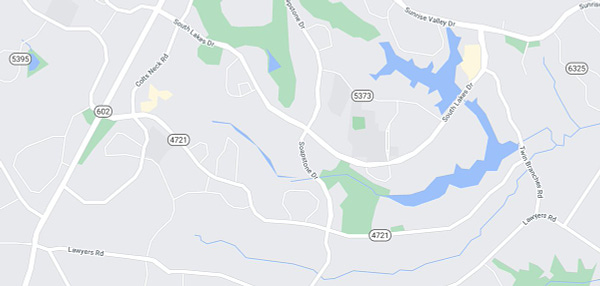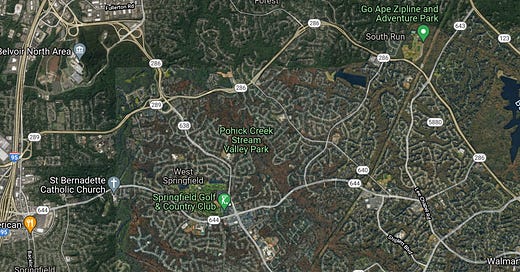On Twitter the other day, on a thread that started with commentary on uniform facades and urban canyons, I wrote this:


I was writing about something I’ve mentioned before, and which I find insightful and useful for thinking about urban versus suburban landscapes: an “evolutionary” lens. That way of seeing them helps you to see the similarities, not just the differences, and to see the process by which traditional patterns have evolved (or, perhaps, devolved.)
When we look at suburbia, whether the kind of low-density residential or office areas like what’s shown in the screenshot above, or commercial strips along stroads, we’re not really looking at a completely new kind of built environment. Rather, what we’re seeing is a traditional pattern that has evolved almost out of recognition in order to adapt to the automobile.
The concept of a road hierarchy—local, collector, arterial roads, and highways—is not an entire departure from the urban grid system. You can see the supersized and car-oriented, but still vaguely gridded nature of the roads in that map image, which is not far from my home in Reston, Virginia. This kind of development isn’t unplanned, as critics of sprawl sometimes portray it. It’s exquisitely planned, but in a suboptimal way.
The existence of these suburban superblocks is not something I ever noticed until recently. It’s dismaying to see how distant and spread out everything is, but it’s also cool to see an echo of a more urban pattern even here. Here’s another example, this time with satellite imagery:
Particularly if all the dead-end streets could be connected, one can imagine this landscape one day filling in, not just along the commercial strips but all throughout, to eventually resemble something like a traditional town. Unlikely, but not inconceivable.
I’m working on an illustrated piece fleshing out the same idea here in regard to strip malls: that they are not modern inventions, but rather essentially urban blocks that are highly and almost unrecognizably adapted to cars.
This has nothing much to do with land-use policy, but I find it an interesting way to look at landscapes that often appear chaotic and disconnected from past development. And that isn’t quite the case.
Related Reading:
A Hint of America’s Lost Urban History
Please consider upgrading to a paid subscription to help support this newsletter. You’ll get a weekend subscribers-only post, plus full access to the archive of nearly 300 posts and growing. And you’ll help ensure more material like this!




